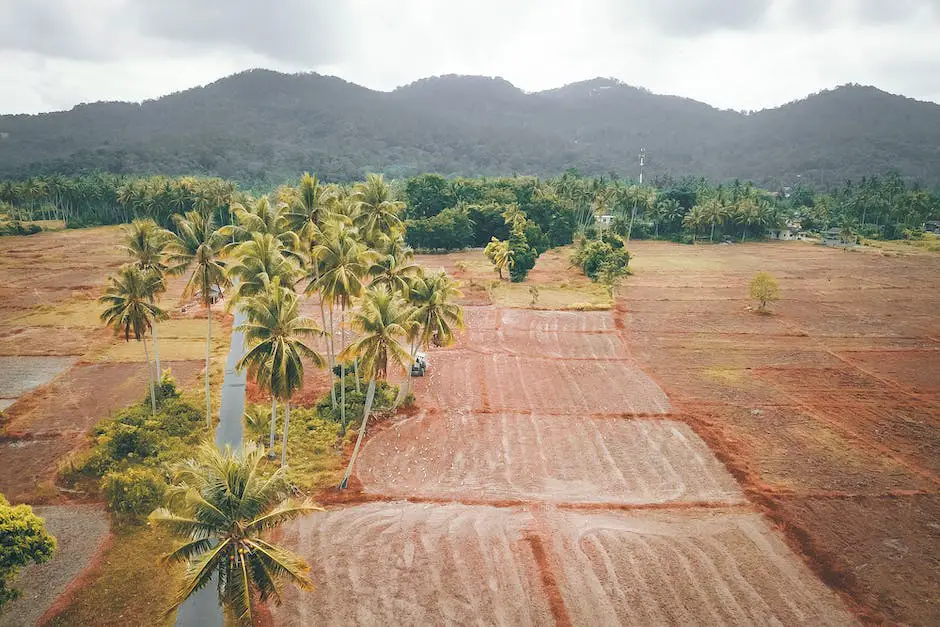Palm trees are a type of plant that is classified as a Producer. Producers are living things that make their own food. They use the food they make to live and grow.
A palm tree is a producer.
Why is a palm tree a producer?
Yes, all plants are producers because they produce energy from light. All plants need light to produce energy, so they are all producers.
Producers are living things that can produce their own energy, primarily from the sun. In the longleaf pine ecosystem, the many plant species that grow on the forest floor and the trees are producers. Consumers are living things that cannot produce their own energy and rely on eating or consuming producers to survive.
Is A cactus a producer or consumer
Cactus plants are considered producers because they make their own food. They use sunlight to convert carbon dioxide into glucose and oxygen through photosynthesis. This process provides them with the energy they need to grow and reproduce.
Plants are producers! They make their own food, which creates energy for them to grow, reproduce and survive. Being able to make their own food makes them unique; they are the only living things on Earth that can make their own source of food energy. Of course, they require sun, water and air to thrive.
What is a palm tree classified as?
According to the botanical definition, palms are not trees but large, woody herbs. For botanists studying classification of plants, this makes sense because palms are classified as herbs, like their close relatives: grasses, bamboos, bananas, and sedges.
Palm trees are common in tropical and subtropical regions of the world. They are the only members of the family Arecaceae, which is the only family in the order Arecales. Palm trees are abundant in the rainforests of the Amazon and Congo basins. Palm trees are also found in the deserts of the Sahara and Arabian Peninsula.
Is a maple tree a consumer?
The sugar maple is a producer that uses the sun’s energy to produce its own food through photosynthesis. The cankerworm is a primary consumer that eats the plant’s tissues to get the nutrients it needs.
Carnivorous plants are an interesting subset of the plant kingdom. Many of them, like the Venus flytrap, are both producers and consumers. What this means is that they make their own food through photosynthesis, but they also rely on other organisms for a diet. In the case of the Venus flytrap, it catches and eats flies and other small insects.
There are many different types of carnivorous plants, each with their own unique adaptations. Some, like the pitcher plant, trap their prey in a pitcher-like structure filled with digestive fluids. Others, like the sundew, have sticky leaves that ensnare unsuspecting insects.
Carnivorous plants are an interesting example of how different organisms can interact with each other in different ways. While most plants simply take what they need from the environment, carnivorous plants have to actively seek out food. This makes them an important part of the food chain and highlights the importance of all different members of an ecosystem.
What plants are producers and consumers
Plants and algae are able to produce their own food using energy from the sun. These organisms are called producers because they produce their own food. Some animals eat these producers. These animals are called consumers because they consume something else to get their food.
Photosynthesis is the process that grass uses to produce its own food. This process begins when the plant absorbs sunlight with its leaves. The plant then uses the sunlight to convert carbon dioxide and water into glucose and oxygen. The oxygen is released into the air and the glucose is used by the plant for energy.
Grass is a primary producer at the bottom of the food chain. This means that it is one of the first sources of food for other organisms. Primary producers are important because they provide food for the entire ecosystem.
Grasshoppers are herbivores that eat grass. They use the grass for food and energy. Without grass, grasshoppers would not be able to survive.
Is a grass plant a consumer?
Grasses are a type of plant that produces its own food. All food chains begin with producers, so grasses are an important part of the food chain.
The primary consumers in a food chain are typically herbivores, while the secondary and tertiary consumers are carnivores. The quaternary consumer is the final link in the food chain. Often, the quaternary consumer is an apex predator, meaning it has no natural predators.
What are 5 examples of producers
Producer organisms are those that produce their own food. Trees, grass, algae, cyanobacteria, and phytoplankton are all examples of producer organisms. These organisms are important because they provide food for other organisms in the ecosystem.
Producers are organisms in an ecosystem that can create their own food using energy from the sun. Grass and trees are examples of producers. The next level is primary consumers. Primary consumers are animals that eat producers for energy. They cannot use energy from the sun.
What is an example of consumer?
A consumer is someone who purchases goods or services for personal use. Consumers can be individuals or groups, and their purchases can be final or intermediate. Here are some examples of consumers:
-A person who buys a new car
-A family that takes a trip to Disneyland
-A business that orders office supplies
-A government that contracts for a new bridge
Palm trees are a type of tree that is native to tropical and subtropical climates. They are known for their tall, slender trunks and their large, umbrella-like leaves. Palm trees are also known for the wide variety of fruits that they produce.
The most common fruit that grows on palm trees is coconuts. Coconuts are a type of drupe, which is a type of fruit that has a hard, outer shell and a soft, inner flesh. Coconut palms are the most widely cultivated type of palm tree, and they grow in many different parts of the world, including the Caribbean, Polynesia, and South Asia.
In addition to coconuts, palm trees also produce a number of other delicious fruits. For example, the date palm produces a type of fruit that is often dried and used as a snack or ingredient in various recipes. The peach palm produces a type of fruit that is very similar to a regular peach, except that it has a hard, outer shell. Finally, the acai palm produces a type of berry that is often used in juices and smoothies.
What are palm trees known for
Palm trees are an integral part of many cultures and have been used for centuries to provide food and other necessities. Coconuts, for example, are a common food staple in many parts of the world. But did you know that palm trees also provide us with acai fruit, dates, betel nuts and oil? All of these items are important in their own way and play a role in the cultures where they are found.
A palm tree is a type of grass that does not create rings as it grows. Its yearly growth is not marked on the tree, and it does not grow bark.
Warp Up
A palm tree is a producer because it is a source of food for animals.
A palm tree is a producer.
Mark Hoffman is a dedicated arborist and tree care specialist with over a decade of experience. His love for trees began when he visited Yosemite National Park as a teenager and was awestruck by the giant sequoias. Mark pursued his passion by studying forestry at Michigan Technological University, where he earned a Bachelor of Science degree.
Since then, he has worked tirelessly in the field of arboriculture, helping to preserve and protect trees in his community. His expertise and dedication have made him a respected leader in the industry and a valuable resource for anyone seeking advice on tree care.
